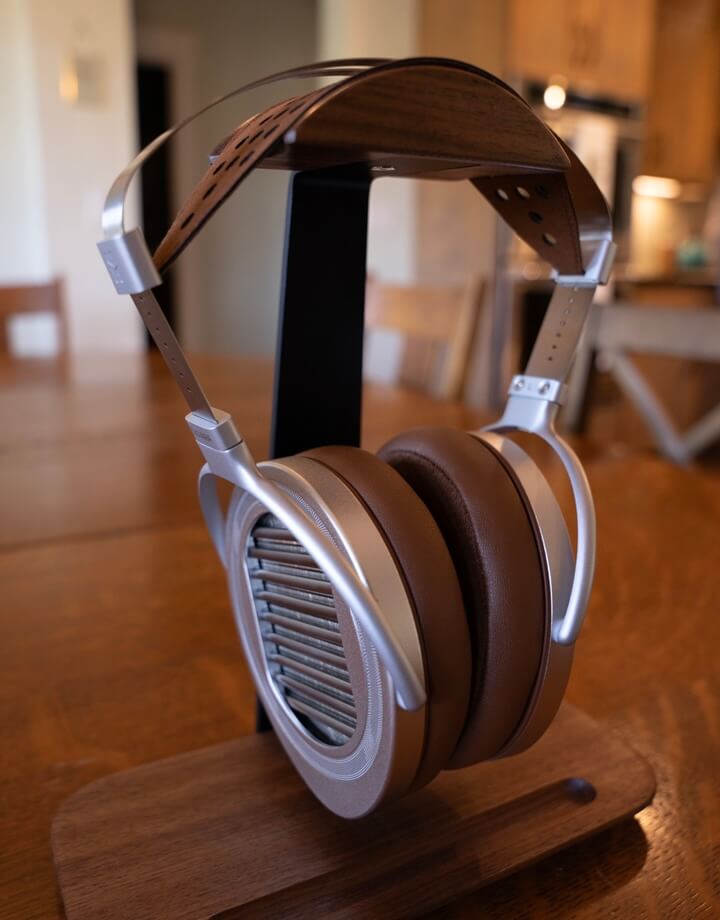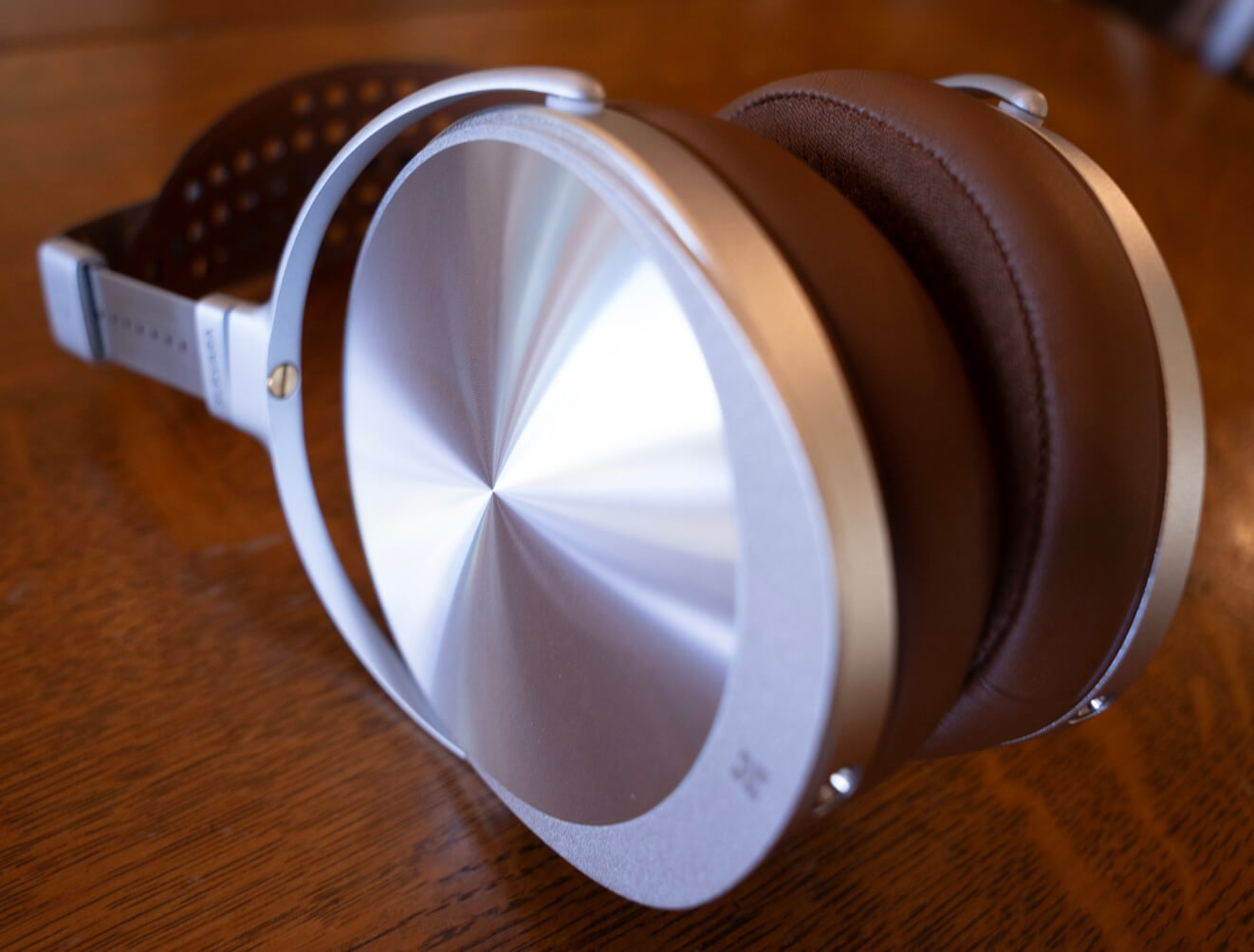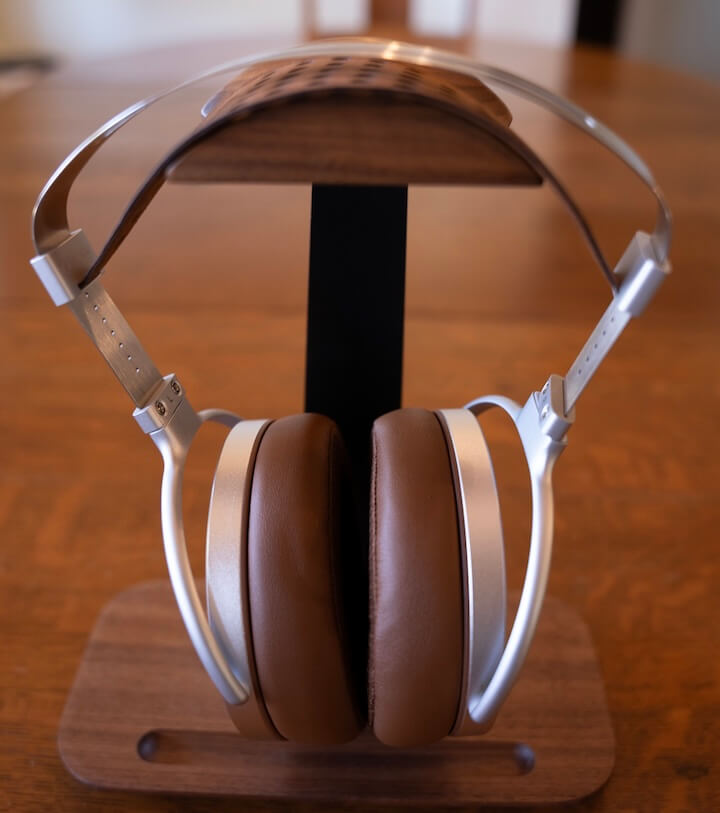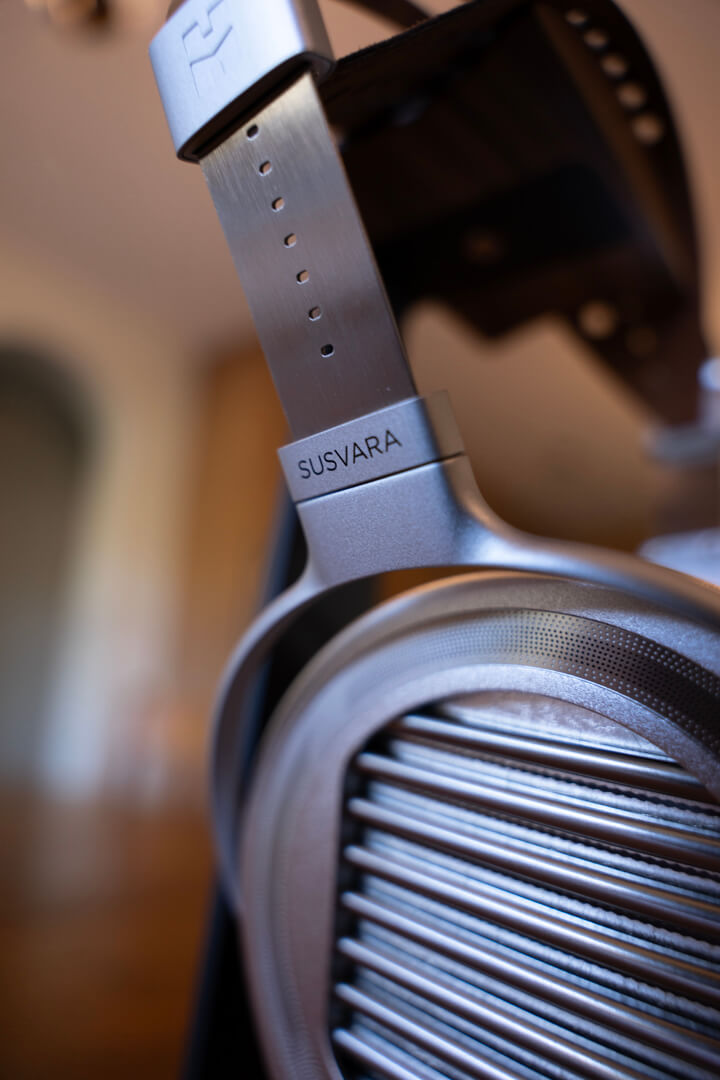HiFiMAN hardly needs an introduction by now. Since Dr. Fang Bian launched the brand in the mid-2000s, they’ve pushed planar magnetic tech from full-size headphones to in-ears and digital players. What began as a niche cult favorite is now a heavyweight in high-end audio. Their lineup spans from the budget-friendly $109 HE400se and closed-back HE-R9, all the way up to the $50,000 Shangri-La electrostatic system—a pure tech flex designed to compete with legends like Sennheiser’s Orpheus. But beyond a certain price, the gains are more about bragging rights than real sound improvements. Most of us won’t drop five figures on headphones—and frankly, why would we? Now, HiFiMAN’s back with the $8,000 Susvara Unveiled, aiming to deliver flagship sound without needing a second mortgage.
The realistic top-of-the-line models these days still go for what many will consider outrageous sums, with most flagship headphones falling somewhere in the $4,000 to $8,000 range. Today’s subject, the HiFiMAN Susvara Unveiled, sits right at the top of that list with an $8,000 price tag. Yes, that’s a massive investment for a pair of headphones—but when you consider what it would cost to build a loudspeaker system that could rival its sound quality, you’re suddenly looking at an extra zero on the end.
I know I’ll never afford a Focal Grand Utopia EVO setup in my home, but maybe—once the kids are through school and the mortgage is gone—I could scrape together enough for a true flagship headphone rig. The real question is: if I’m going to spend that kind of money, would I choose the Susvara Unveiled over the other world-class contenders in that bracket?
The Susvara Unveiled was the first model in HiFiMAN’s new “Unveiled” line and takes a radical approach to driver design. It ditches the traditional outer grill entirely and uses only a minimal internal screen, resulting in a headphone with virtually nothing between the driver and your ear.
For years, headphone manufacturers have poured time and money into reducing the impact that structural elements have on sound—whether it’s HiFiMAN’s own Stealth Magnet design or Audeze’s Fazor waveguides, the goal has always been the same: get the hardware out of the way of the sound. HiFiMAN’s solution here is brutally straightforward—remove as much structure as possible and leave the back of the driver completely exposed.
Sure, there are trade-offs involved, especially when it comes to protection and practicality, but from a pure sound quality perspective, it’s hard to argue that any obstruction is better than none.
Unboxing the Susvara Unveiled: Fancy Case, Fancy Cables, and Driver Babying 101
The Susvara Unveiled shows up in HiFiMAN’s usual high-end presentation case—think synthetic leather outside, silk-like lining inside, and a foam cutout that cradles the headphones like they’re made of glass. Inside, you get the headphones, the manuals, two cables (because one just isn’t enough when you’re playing at this price tier), plus a couple of new extras unique to the Unveiled series.
The drivers come with protective pouches slipped over the ear cups, plus aluminum magnetic covers designed to keep those precious diaphragms safe when you’re not wearing them or stashing them back in the case. Because when you’re dropping eight grand, babying the drivers isn’t optional—it’s mandatory.
The cables are a nice touch: cloth-wrapped mono-crystalline copper and silver wires, nearly ten feet long, with 3.5mm plugs up top clearly marked L and R—because guessing which side is which shouldn’t be a brain teaser at this price. Down at the other end, you get a 6.35mm plug and a balanced XLR, which is the first hint these aren’t travel-friendly headphones. No pocketing these bad boys anytime soon.
Visually, the Susvara Unveiled looks a lot like the original Susvara—big, round ear cups with that familiar slight downward extension where the cable plugs in, brushed metal gimbals, and a stainless steel headband with the signature perforated leather suspension.
The real headline here is the exposed rear driver, replaced by just those minimal louvers separating your ear from the diaphragm itself. A subtler tweak is the swap to a milk chocolate brown on the pads and headband—less black, more “I mean business but also rich.”
Oddly enough, there’s still a fine mesh screen over the inner driver surface and a sheer cloth lining beneath the pads. The pads themselves are hybrids, with vegan leather on the outside and perforated cloth inside, a nod to comfort and breathability. At 430 grams—just under a pound—they’re not featherweights, but they don’t feel like you’re lugging around an anchor either.

Inside the Driver: HiFiMAN’s Planar Magnetic Tech Unleashed
The Susvara Unveiled rocks HiFiMAN’s top-tier planar magnetic drivers loaded with their latest tech. At the core are Stealth Magnets designed to improve airflow and reduce interference, paired with a nanometer-thin diaphragm that boosts response time to lightning speed. The conductive layer is metallic silver—chosen for its superior conductivity over gold, despite what some might assume—delivering maximum electrical efficiency without resorting to exotic materials.
Compared to the original Susvara, which used gold in the conductive layer, silver here is a clear upgrade for pure performance. Coupled with ditching the original model’s outer grill, sound now travels nearly unobstructed both ways, cutting down on reflections and refraction so what you get is the pure, unadulterated signal straight to your ears.
The technical specs back it up: a nominal impedance of 45Ω, 86dB sensitivity, and an impressive frequency response from 6 Hz all the way up to 75 kHz.
Exposing the driver like this does come with a catch: you’re on the hook for protecting these delicate components. When the Susvara Unveiled isn’t in use, you better have those protective pouches or aluminum covers on hand to shield the drivers from dust, moisture, and curious fingers.
Without that, you risk turning your $8,000 investment into a fragile paperweight. Suffice to say, these are not headphones you want to drag onto the subway or outdoors for your morning commute.

Comfort & Fit: Weight Well Distributed, But Magnetic Covers Play Hard to Handle
On the head, the Susvara Unveiled does a solid job distributing its weight evenly, and the adjustment range means most folks will find a comfortable fit without fuss. I had zero issues with clamping force—even wearing glasses, the pressure wasn’t overbearing. At the same time, the headphones stayed firmly in place during movement, syncing nicely with the music rather than sliding around.
One subtle but notable difference from its sibling, the Isvarna, is that touching the cups or cable on the Susvara Unveiled doesn’t immediately translate to noise in the ear—something that’ll matter if you’re moving or fidgeting.
Now, about those magnetic covers—you have to remove them before you can use the headphones, which is straightforward enough. But the magnets themselves feel a bit wishy-washy: they pop off if you give them a little shake (and seriously, don’t shake your $8,000 headphones).
Finding a place to set the covers while you’re listening was trickier than expected because the magnets tend to pick up random small items—paper clips, for example.
They’re strong enough to be a nuisance but not strong enough to inspire confidence. Then again, if you’re dropping eight grand on headphones, shelling out for a dedicated side table to hold your magnetic covers might be the smallest splurge on your list.

Listening Impressions & Amplifier Pairings: Musicality Demands Power and Precision
HiFiMAN doesn’t position the Susvara Unveiled as the ultimate “reference” headphone; instead, they emphasize its focus on “pure musicality.” So, expect some intentional deviations from a perfectly flat frequency response—that’s part of the design philosophy. As a $2,000 upgrade over the original Susvara, it’s fair to expect a noticeable step up in performance.
When it comes to amplification, the Susvara Unveiled definitely demands power. HiFiMAN recommends their own EF1000 amplifier, but for third-party amps, they suggest models delivering between 5 and 10 watts per channel. I tested the Susvara Unveiled with a Pass HPA-1 (3.5 watts at 32Ω), the RME ADI-2 FS R BL (1.5 watts), and an Orchard Audio Valencia amplifier (9.5 watts into a 50Ω load). The HPA-1 delivered a clear improvement over the RME ADI-2, which struggled to push the Susvara hard enough. Pairing the RME ADI-2 as a DAC/preamp feeding the Orchard Audio Valencia amp was near ideal, with ample power and clean delivery.
Additionally, I tried a custom-built 300B tube amplifier—similar in design to the Kevalin HPA-300B and Feliks Audio Arioso—that delivers roughly 8 watts into the Susvara Unveiled. The headphone truly comes alive with more potent amplification, so anyone considering the Susvara Unveiled should factor in the cost of a capable amp to maximize their investment.
Bass: Subtle, Nuanced, and Just Enough—No Teeth-Jarring Booms Here
Coming straight off the Isvarna, the difference in bass presentation is hard to ignore. The Susvara Unveiled delivers bass that’s confident but never shoved in your face. It digs deep enough to give you some satisfying rumble, but it’s far from the forward, in-your-chest slam of the Isvarna. Instead, the mid-bass takes center stage here—more natural, more musical. Timpani hits pop nicely without turning into a dental appointment, and while sub-bass gets its moments (think bass guitar, kick drum, string bass, and low brass), it stays mostly in the background supporting the groove rather than dominating it.
The mid-bass is where the Susvara Unveiled really shines, with nuanced, textured delivery that shows off the complexity of low-end instruments. Honestly, both the original Susvara and the Unveiled nail this part of the spectrum, and the new model doesn’t try to reinvent the wheel—it just keeps it rolling smoothly. Credit where it’s due: HiFiMAN got the bass right from day one.
Midrange: Where the Real Magic Happens—and the Susvara Unveiled Doesn’t Miss a Beat
If you’re a fan of complex jazz and classical music like I am, the mids are make-or-break territory. Luckily, the Susvara Unveiled nails it. The mid-bass slides smoothly into the lower mids without any muddiness or bleed, so lower voices cut cleanly through the mix—even in tracks packed with heavy mid-bass energy. Guitars get a proper growl and rasp, with quick, unobtrusive decay that keeps things crisp. Case in point: 40 Fingers’ take on “Sultans of Swing” delivers four acoustic guitars that blend beautifully but remain individually distinguishable—a rare trick.
Strings also come through with solid energy and realistic tonality. Listening to “The Great Gate of Kiev,” each violin part stands out clearly, even though the piece demands wide dynamic swings and clean separation—a real test for any headphone. Upper voices are handled with aplomb, balancing energy without tipping into nasality or stridency. They stay lively without overshadowing lower vocals or instruments.
In fact, I find the Unveiled a slight upgrade over the original Susvara here, smoothing out the subtle gap between higher and lower vocals. Overall, the Susvara was already fantastic in the mids, and the Unveiled keeps that legacy alive with a modest but noticeable boost in vocal energy and spatial positioning.
Treble: Polite, Balanced, and Less Zingy—A Slight Shift in Character
The Susvara Unveiled tones down the lower treble a notch compared to the original, which had a bit more energy and gave cymbals a sharper zing. Percussion snap remains solid—snare rattles are crisp and strikes decay quickly, so you don’t lose that vital rhythmic punch. Cymbals are definitely more polite here, which will please anyone who thought the original Susvara was a little too hot up top. Personally, I never found the original’s treble overdone, so this feels less like an upgrade and more like a stylistic shift.
That said, this treble pullback does help the overall balance, drawing less of my attention to the upper frequencies and giving the Unveiled a more even-handed sound signature. I can appreciate that. There’s still plenty of air and sparkle at the very top—no sizzle, no harshness—just a refined, mature treble presentation.
Soundstage: Bigger, Deeper, and Just More Damn Engaging
This is where the Susvara Unveiled really pulls ahead of the original. The Unveiled opens up both more depth and a wider soundstage without sacrificing the razor-sharp definition or listener engagement. Vocals feel a bit closer—like they’re having a quiet chat with you—while ambient echoes stretch farther back, creating a real sense of space. Listen to The Cowboy Junkies’ “So Lonesome” and you’ll feel it instantly.
The Unveiled shines on binaural recordings too. I lost hours with favorites like Lou Reed’s Street Hassle and Jorge Mester conducting Hector Olivera and the Pasadena Symphony on Also Sprach Zarathustra. Instrument separation is nothing short of superb, and seating the orchestra feels effortless. Tracking instruments weaving through the soundstage? Easy. That makes immersive albums like Quadrophenia downright addictive.

The Bottom Line: Brilliant, But Not a Game-Changer
I’m torn here. On one hand, the Susvara Unveiled is undeniably one of the finest headphones I’ve ever had the pleasure to hear. On the other, calling it a 30% upgrade over the original Susvara feels like a stretch. It nails everything the original did—and then some—with a more balanced sound and a slightly more precise soundstage.
That said, this level of performance comes with strings attached: these headphones demand careful handling, are strictly home-bound due to their fragility and power requirements, and will cost you well into the five-figure range once you factor in proper amplification and gear.
Bottom line? If you want the absolute best and have the cash to back it up, the Susvara Unveiled might just be your ticket to audio nirvana. For the rest of us, well… the original Susvara still holds up like a champ.
Pros:
- Elevates an already insanely good headphone
- Comfortable enough for marathon listening sessions
- Soundstage feels more natural and spacious than the original
Cons:
- Price tag isn’t for the faint of heart
- Demands careful handling — no roughhousing allowed
- Needs a powerhouse amplifier (and wallet to match)
- Magnetic covers could stick a bit better







